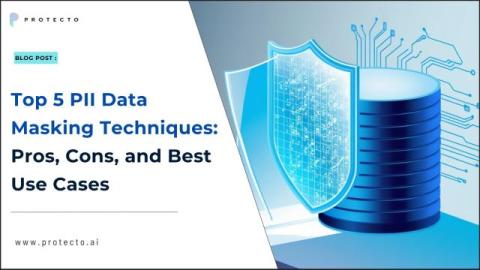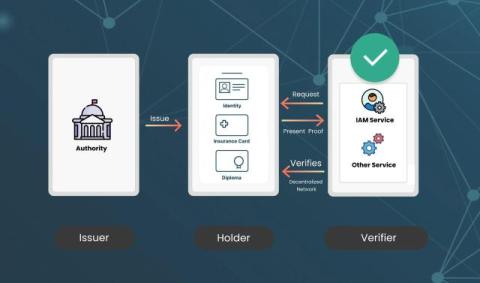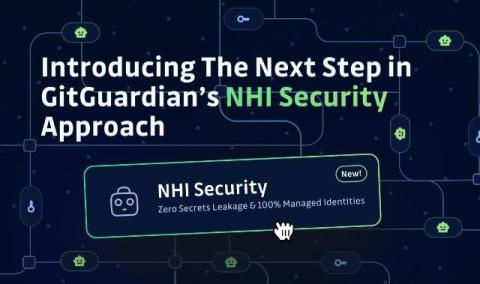Security | Threat Detection | Cyberattacks | DevSecOps | Compliance
opsdemon
Latest posts
Top 5 PII Data Masking Techniques: Pros, Cons, and Best Use Cases
Protecting sensitive information has never been more critical, especially in today’s AI-driven world. As businesses increasingly leverage AI and advanced analytics, safeguarding Personally Identifiable Information (PII) and Patient Health Information (PHI) is paramount. Data masking has become a cornerstone strategy, allowing organizations to securely manage and analyze data while significantly reducing the risks of exposure and misuse.
How Self-Sovereign Identity Will Transform User Verification in 2025?
Self-Sovereign Identity (SSI) is the latest privacy and security model that uses blockchain and cryptography to put you in control of your own identity. In this blog, we will dive into what SSI is all about, its core principles, real-life uses, and why it is set to transform how we manage identities in todays digital world.
Turning Security Insights into Action with Bitsight's New Jira Integration
Enterprise security is a job that is never truly done. Success comes down to prioritizing high-impact activities, executing them efficiently, and adapting as new information emerges. Bitsight Security Performance Management (SPM) is the centerpiece of this lifecycle for many organizations. It helps security teams understand their external attack surface in detail and make data-driven decisions about how to apply their limited resources most effectively.
Fireblocks CEO Says Stablecoins, Tokenization Have "Enormous Untapped Potential" At SPARK Conference
The anticipated change in stance from US regulators will drive a huge boost to global stablecoin adoption, which is already rapidly gaining traction as their share in cross-border and business-to-business payments grows, according to Michael Shaulov, CEO of Fireblocks.
How Governments Can Mitigate AI-Powered Cyber Threats
Cybersecurity leaders across all levels of government are growing increasingly alarmed by the rise of cyber attacks fueled by Artificial Intelligence (AI). Cybercriminals are now incorporating machine learning and automation into their strategies, significantly boosting the scale, efficiency and sophistication of their attacks. According to a recent survey of over 800 IT leaders, a staggering 95% believe that cyber threats have become more advanced than ever before.
New RBAC feature offers granularity and flexibility for Outpost24's EASM customers
A new role-based access control (RBAC) feature has been added to Outpost24’s external attack surface management (EASM) solution. This opens up new possibilities for Outpost24 customers, allowing them to be more granular when it comes to configuring permissions for different roles.
Preventing WAF Bypass: How AppTrana Protects Origin Servers with Resilient Architecture
A recent discovery by Zafran.io reveals critical vulnerabilities in web application firewalls (WAFs) from providers like Akamai and Cloudflare. Misconfigured origin validation allows attackers to bypass WAF protections and directly access backend servers, creating opportunities for data breaches, DDoS attacks, and more. While most WAF vendors offer IP whitelisting as a solution, implementing it presents significant challenges such as.
How YARA rules can complement NDR for malware detection
The Verizon 2024 Data Breach Investigations Report found that system intrusion is the leading attack pattern for the third consecutive year, accounting for 36% of breaches. System intrusion largely consists of a threat actor using hacking techniques and malware to infiltrate the victim organization. Following a successful intrusion, the attacker continues on a multi-stage process: The longer an attacker remains undetected, the greater their opportunity to find a target and extract data.
How To Protect Your IP Address
You can protect your IP address by hiding it and masking your location to prevent cybercriminals from impersonating or tracking you. An IP address, also called an Internet Protocol address, is a series of unique numbers that identifies your device on the internet or the network it’s connected to. Your IP address allows information to be sent across a network and distinguishes your device from others on the internet.
Introducing The Next Step in GitGuardian's NHI Security Approach
Discover how GitGuardian is redefining non-human identity (NHI) security with comprehensive secrets security and governance solutions to protect against modern threats.












